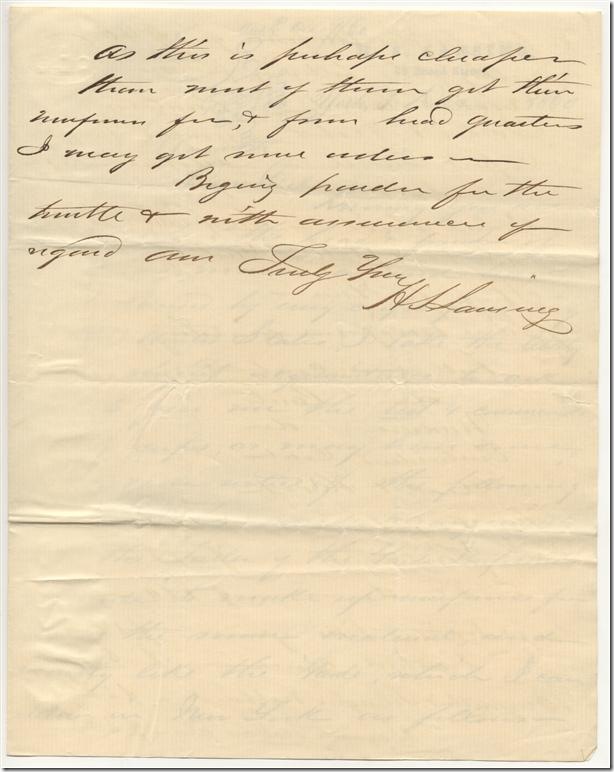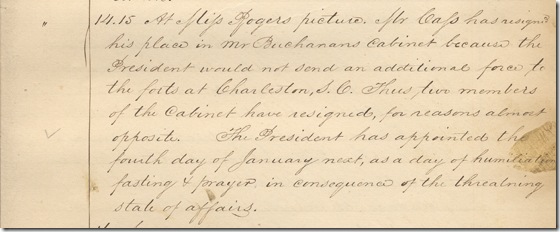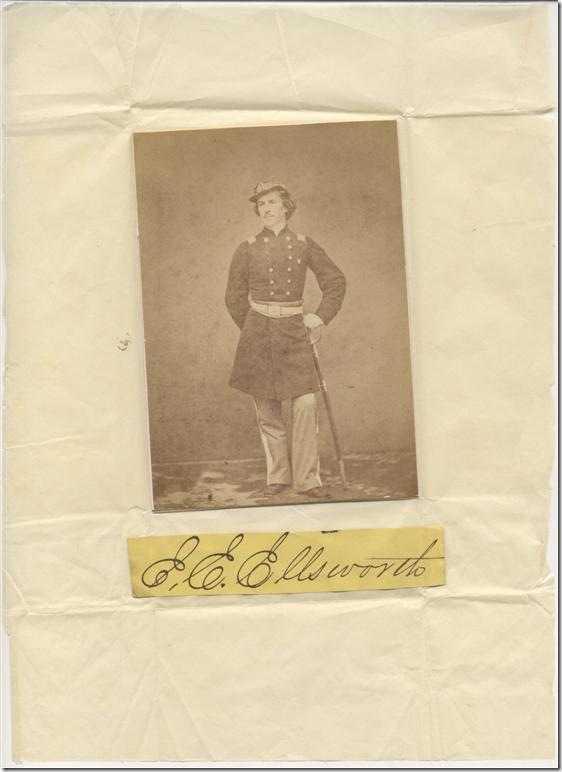Col. Elmer Ellsworth was a lawyer and soldier and friend of Abraham Lincoln who would become one of the first casualties of the Civil War. As a colonel of the Chicago National Guard Cadets before the war, Ellsworth introduced French-inspired Zouave uniforms and drills to the unit. He worked in Lincoln’s law office in August 1860 and assisted him during the fall campaign. After Lincoln’s election he helped organize troops, including the 11th New York Volunteer Infantry Regiment. He was shot and killed on May 24, 1861 while removing a large Confederate flag from a tavern in Alexandria, Virginia.



Transcription:
New York, 5 Dec 1860
Col Ellsworth
Dear Col
Knowing you are looked upon as the head & front of the Zuave [sic] movement, and have been addressed by every corps forming in the United States, I take the liberty of our slight acquaintance, to ask you to give me the list & commanders of such corps, as may have come under your notice & for the following names- I have made arrangements with the “Tailor of the Garde Imperial of France” to make up uniforms for me of the reserve material, and exactly like the “Garde” which I can deliver in New York as follows- a full privates uniform for $40- consisting of the following pieces-
Cloak & Hood – Pantaloon
Jacket & Vest- Leggings & Garters
Cap & Tassel – Turban
Sash – Pin
Coarse shirt – Knapsack & straps
Sword[?] belt & plate – Cartridge box –
Strap for gun –
Officers uniform consisting of
Full dress coat
do pants
Undress do
Embroidered coat
Cloak & [illeg.]
For Captain $125
Lieutenant $115
2nd do $110
Sword & scabbard like yours $14
Scabbard alone $5
Bayonette & Telescopic scabbard $5.70
Bayonette scabbard alone $3.20
As this is perhaps cheaper than most of them got this uniform for, & from head quarters I may get some orders-
Begging pardon for the trouble & with assurances of regard am
Truly Yours
H. S. Lansing
Citation: H.S Lansing, autograph letter signed to Elmer Ellsworth. New York, 5 December 1860. AMs 811/2.5







